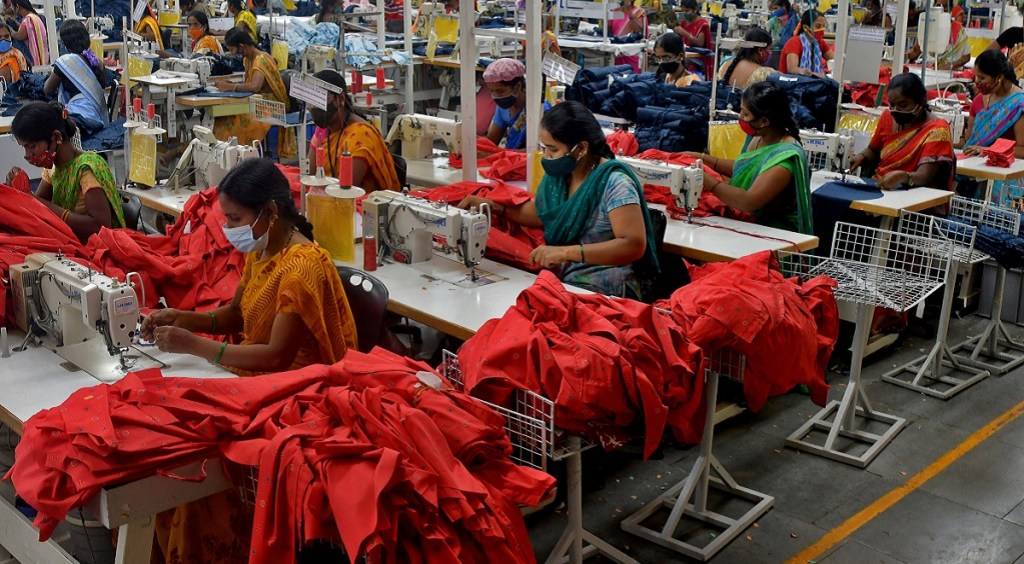– By SN Modani
The textile industry in India has long been an essential contributor to the country’s economy, employing millions and functioning as an important export sector. With a strong textile production history and a large pool of qualified workforce, India has the potential to become a global industry leader. However, numerous obstacles must be addressed to achieve the ambitious goal of growing the textile business to $200 billion, which was set by Piyush Goyal, Minister of Commerce & Industry, Consumer Affairs, Food & Public Distribution, Textiles, Government of India. With a rich history of textile production and a wealth of skilled artisans, India possesses the necessary foundations to propel its textile industry to unprecedented heights.
India’s textile industry has a centuries-old legacy rooted in exquisite craftsmanship and traditional techniques. This heritage provides a unique advantage, enabling India to offer a diverse range of textile products with unparalleled quality and artistry. By leveraging this heritage and preserving traditional techniques while incorporating modern design sensibilities, India can capture the attention of global markets seeking authentic and culturally rich textiles.
One of India’s greatest strengths lies in its abundance of skilled artisans with generations of knowledge and expertise. These artisans can create intricate weaves, delicate embroideries, and handcrafted textiles that are unparalleled in beauty and craftsmanship. By providing adequate training, upskilling initiatives, and access to modern tools and technology, India can empower these artisans to create contemporary designs that resonate with international buyers, thereby driving growth and demand.
The Indian government acknowledges the significance of the textile sector and has enforced many programmes to help it flourish. Endeavours such as the Make in India campaign, the National Textile Policy, and the Technology Upgradation Fund Scheme (TUFS) have facilitated investments, provided financial help, and created an enabling environment for textile makers. In addition, further reforms aimed at reducing bureaucratic hurdles, streamlining regulations, and improving ease of business will attract domestic and foreign investors, fostering industry growth.
To achieve the $200 billion target, India must expand its presence in the global market. By forging strategic partnerships, participating in international trade fairs and exhibitions, and effectively leveraging e-commerce platforms, Indian textile manufacturers can showcase their products to a broader audience. In addition, collaborations with international fashion brands and designers can help penetrate high-end markets, allowing Indian textiles to gain recognition and value globally.
Sustainability is a growing concern in the global textile industry. By promoting organic resources and adopting eco-friendly practices, India may position itself as a pioneer in sustainable textile manufacture. Emphasizing responsible sourcing, reducing water consumption, and implementing cleaner production techniques will meet global sustainability standards and attract conscious consumers who value ethically produced textiles.
Technology integration is critical for India’s textile industry to leapfrog into the future. Automation, digitalization, and the Internet of Things (IoT) can significantly enhance efficiency, productivity, and quality control. Investments in state-of-the-art machinery, digitized supply chain management, and advanced textile processing techniques will enable India to compete on a global basis and fulfil the changing expectations of the sector.
India’s textile industry possesses immense potential to achieve the target of $200 billion, fueling economic growth, generating employment opportunities, and showcasing the nation’s cultural heritage to the world. By harnessing its rich textile heritage, empowering skilled artisans, implementing supportive policies, strengthening market access, adopting sustainable practices, and embracing technology, India can overcome the challenges and lead the global textile market. The collective efforts of the government, industry stakeholders, and artisans will pave the way for a thriving and prosperous Indian textile industry, one that continues to be a symbol of excellence, craftsmanship, and innovation.
(Dr SN Modani is the managing director & CEO at Sangam India Ltd.)
Disclaimer: Views expressed are personal and do not reflect the official position or policy of Financial Express Online. Reproducing this content without permission is prohibited.

